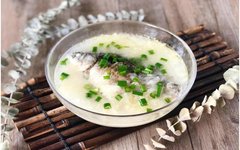
Traditional Chinese Medicine on the Tip of Your Tongue
In Traditional Chinese Medicine (TCM), the concept of “food as medicine” has been highly valued throughout history. It is believed that “dietary therapy” is superior to “medicinal therapy.” Dietary therapy, also known as food therapy, utilizes food and medicinal ingredients as raw materials, which are then cooked and processed to create meals that have therapeutic effects. This practice is a product of the integration of TCM knowledge and culinary experience. Dietary therapy is not merely a simple combination of food and medicine; rather, it is a refined product made from medicinal herbs, food ingredients, and seasonings under the guidance of TCM diagnostic theories such as yin-yang and deficiency-excess. These meals possess nutritional value and can prevent diseases, treat illnesses, promote health, and prolong life.Ancient Chinese people recognized early on that dietary therapy not only provides essential nutrients for growth and healthy living but also has therapeutic effects. The first medical theoretical work in China, the “Huangdi Neijing” (Yellow Emperor’s Inner Canon), highly praises the role of dietary therapy in health preservation. Subsequently, methods of dietary therapy have been recorded in various medical texts throughout history, including “Beiji Qianjin Yaofang” (Emergency Prescriptions Worth a Thousand Gold), “Shiliao Bencao” (Dietary Therapy Materia Medica), and “Bencao Gangmu” (Compendium of Materia Medica). In modern times, physician Zhang Xichun pointed out in “Zhongzhong Canxi Lu” that food “not only treats diseases but also satisfies hunger; it is not only filling but also palatable. When used according to symptoms, the illness gradually improves; even if not used according to symptoms, there are no other ailments.” This shows that dietary therapy has always been emphasized by physicians and has become a common method for Chinese people to prevent and treat diseases.In the fast-paced modern society, people are busy with their lives and often lack the time and energy to care for their health. Dietary therapy emphasizes the combination and preparation of food, allowing individuals to maintain their health through daily meals, thus avoiding the hassle of seeking medical advice. As the saying goes, “All medicines have some toxicity.” Any medication has side effects, and long-term use can lead to dependency. The most significant feature of dietary therapy is that it “treats diseases when they occur and strengthens the body when there are no diseases,” with minimal toxicity and side effects. It utilizes the properties of medicines while employing the flavors of food. For healthy individuals, it can promote health and strengthen the body; for those who are ill, it can nourish the body, enhance physical strength, and assist in the therapeutic effects of medications. Moreover, most of the ingredients used in dietary therapy are commonly found in daily life, which not only avoids toxicity and side effects but is also cost-effective, allowing people to achieve health regulation while enjoying delicious food.The spleen is located in the middle jiao, in the upper abdominal cavity, beneath the diaphragm. TCM believes that the spleen and stomach are the foundation of postnatal life and the source of qi and blood production, which are crucial for human health and survival. If the qi mechanism of the spleen and stomach is obstructed and their function is abnormal, the five organs and six bowels cannot be nourished, leading to a gradual decline in vitality. Therefore, TCM emphasizes that health preservation should focus on protecting the spleen and stomach, combining the nourishment of the spleen with that of the stomach. Common medicinal and food ingredients used in spleen-nourishing and stomach-strengthening dietary therapy include: Shan Yao (Dioscorea, Chinese yam), Bai Zhu (White Atractylodes), Dang Shen (Codonopsis), Huang Qi (Astragalus), Huang Dou (Yellow Soybean), and Yi Yi Ren (Job’s Tears).
Recommended Dishes:
● Yu Zhu (Polygonatum) and Sha Shen (Adenophora) Fish Soup
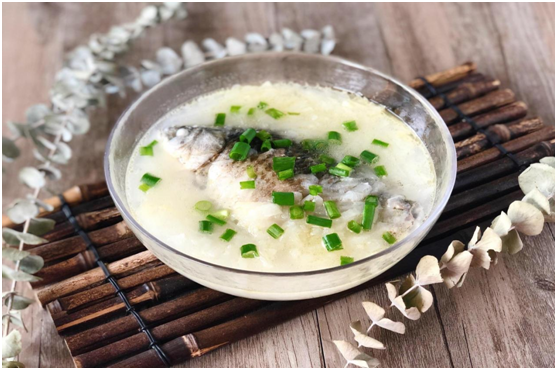
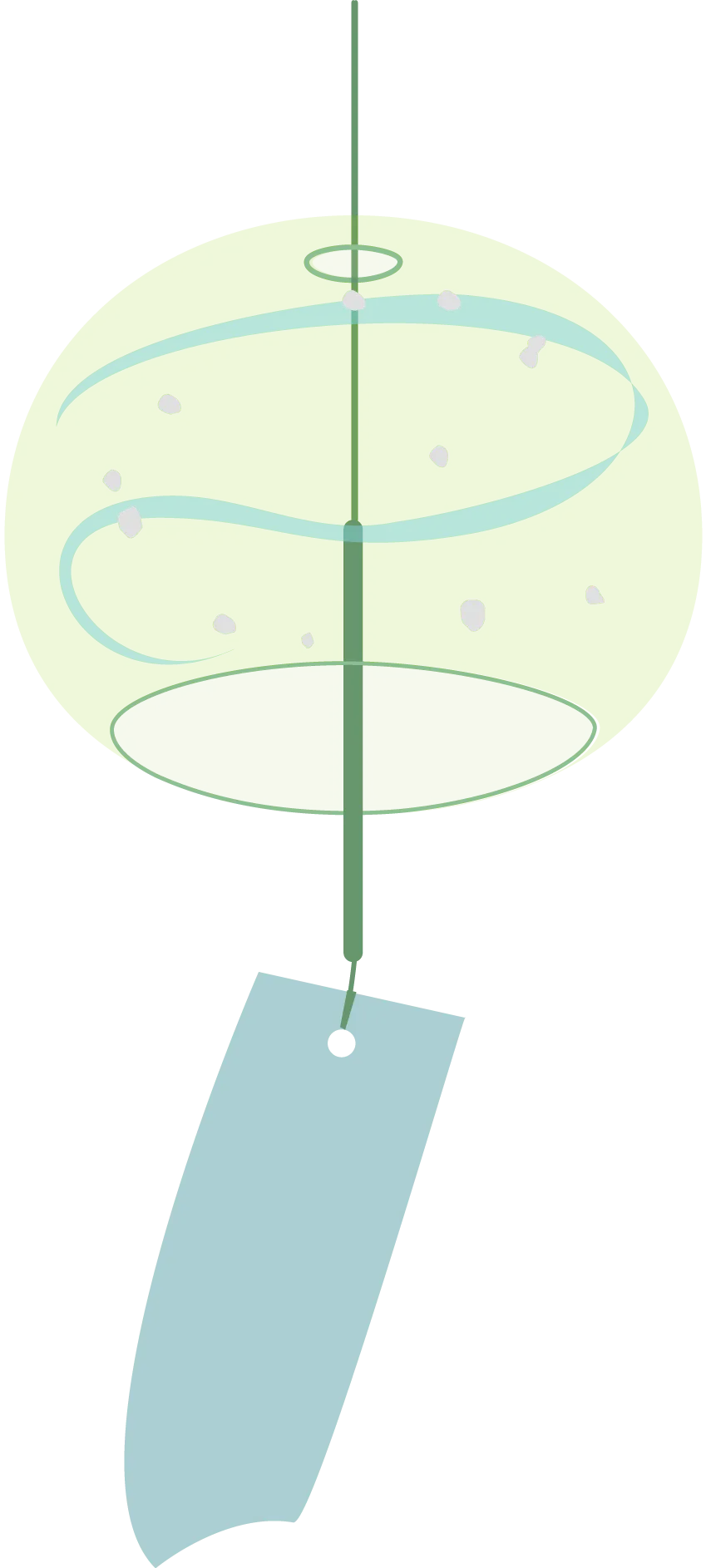
Ingredients
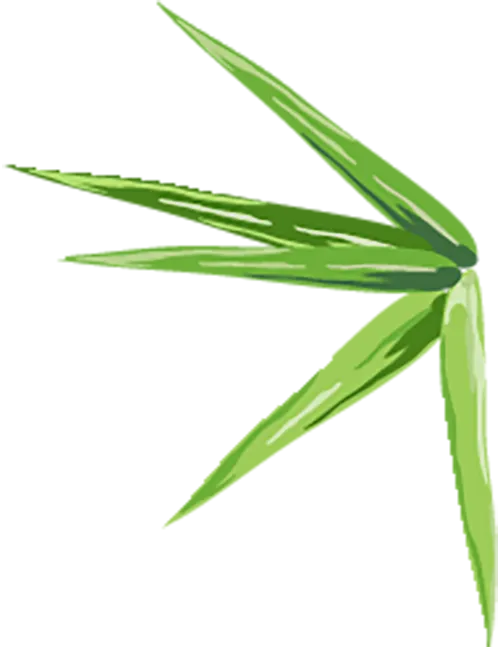
15g Yu Zhu (Polygonatum), 10g Sha Shen (Adenophora), 10g Mai Men Dong (Ophiopogon), 1 fish (Carassius auratus), 100g Winter Melon, appropriate amount of Pepper, Salt, and Ginger.

Preparation Process
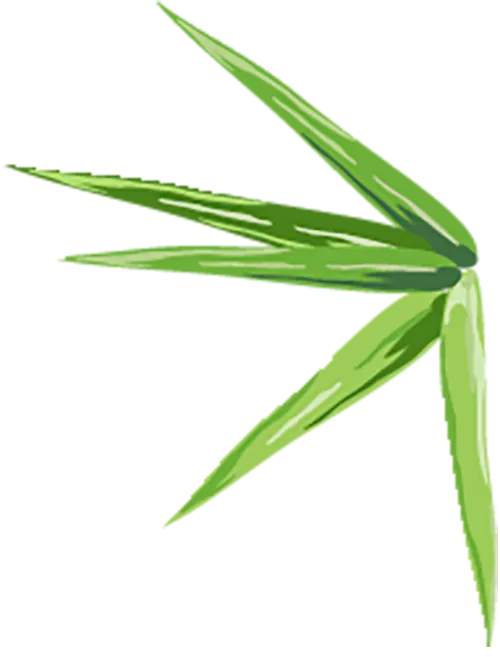
1. Clean the fish, removing the internal organs; peel and wash the winter melon, then slice it. Clean the Yu Zhu, Mai Men Dong, and Sha Shen.
2. Heat oil in a pan, add scallions and ginger to release fragrance, then add winter melon and stir-fry until slightly tender.
3. Add water, then add the fish, Yu Zhu, Sha Shen, and Mai Men Dong, and cook until done. Season with salt and pepper.

Function and Efficacy

This dish generates fluids, quenches thirst, clears heat, promotes urination, and can be consumed by patients with diabetes and hypertension.
● Yam and Pork Stomach Soup●
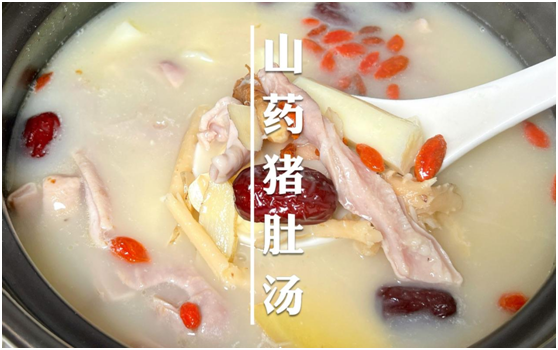

Ingredients

500g Pork Stomach, 100g Shan Yao (Dioscorea), 8 Red Dates, 5g Salt, appropriate amount of MSG.

Preparation Process

1. Turn the pork stomach inside out, rinse with clean water, then rub with peanut oil and starch repeatedly until the mucus and odor are completely removed; cut into 1 cm wide strips.
2. Peel the Shan Yao and cut into chunks, soak in cold water for later use.
3. Heat oil in a pan, briefly stir-fry the pork stomach, then add the red dates into a clay pot; add an appropriate amount of clean water, bring to a boil, then simmer for 2 hours; add the Shan Yao 20 minutes before finishing, and season with salt and MSG.

Function and Efficacy

Shan Yao and Pork Stomach can strengthen the spleen and benefit qi, effective for patients with spleen deficiency, diarrhea, poor appetite, and pale complexion.
● Chen Pi (Dried Tangerine Peel) Braised Beef●
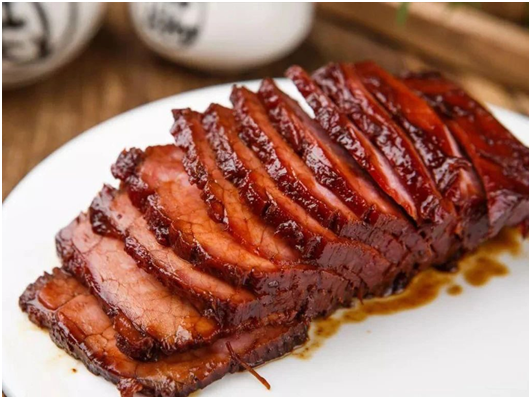

Ingredients

300g Fresh Beef, 20g Chen Pi (Dried Tangerine Peel), appropriate amount of Ginger, Sugar, 3g Salt, 5ml Soy Sauce.

Preparation Process

1. Remove the fat and membranes from the fresh beef, wash it clean, and cut it into large pieces; soak and cut the Chen Pi into small pieces.
2. Blanch the cut beef in boiling water.
3. Heat oil in a pan, add the beef to stir-fry until fragrant, then add water, ginger slices, and a spoonful of cooking wine, and simmer on low heat for about 1.5 hours until the beef is tender; then add soy sauce, sugar, salt, and Chen Pi, and continue to cook for about 0.5 hours to allow the beef to absorb the flavors. After cooking, remove and let cool, then slice thinly for serving.

Function and Efficacy

Beef can replenish qi and blood, warm the spleen and stomach, and build muscle, making it an excellent winter nourishing food; Chen Pi can relieve abdominal distension and aid digestion.
END
(Some images in this article are sourced from the internet, and the copyright belongs to the original authors)
Follow the hospital’s WeChat public account for appointment scheduling and health information updates.

